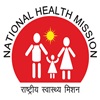National Vector Borne Disease Control Programme
National Vector Borne Disease Control Programme (NVBDCP) focuses on prevention & control of vector borne diseases like Malaria, Dengue and Chikungunya, Japanese Encephalitis (JE), Kala-azar and Lymphatic Filariasis. Dengue, Malaria and Japanese Encephalitis are major public Health challenges in Uttarakhand state.
Malaria
Vision
Eliminate Malaria and contribute to Improved Health
Goal
Eliminate malaria By 2030
Maintain Malaria Free status and prevent re-introduction of Malaria
Objective
Eliminate Malaria
Reduce the incidence of Malaria (Annual Parasite Incidence -API)
Interrupt indigenous transmission by 2027
Prevent the reestablishment of local transmission
Achievements
Malaria in Uttarakhand state has reduced significantly over the years with an overall decline in malaria related morbidity and mortality.
Incidence of Malaria decreased by 97.44 % from 2017 to 2021.
Malaria has reported continuous decline in the state with a total of 15 cases in 2020 and 13 malaria cases in 2021.
Annual parasite Incidence (API) of the state in the Year 2021 is 0.0012.
There is no death due to Malaria till now.
Activities
Malaria is a notifiable disease in Uttarakhand state.
Under Fever Surveillance, ASHA have been trained for Blood Slides preparation (incentive of Rs. 25/- per slide preparation) and treatment of Cases (incentive of Rs. 75/- per case treatment).
For early Diagnosis and complete treatment of Malaria, Blood slides of all the patients suffering from fever are sent for testing, ASHA’s are being trained for this purpose.
The testing facility through microscopy is made available upto all CHC/PHC. For distant areas, bivalent rapid antigen test are also made available and anti Malarial Medicines are available at Hospital/PHC/CHC levels.
Malaria cases occur in plain regions of the state and in few pockets.
Out of 13 districts, 7 districts namely Almora, Bageshwar, Chamoli, Rudraprayag, Pithoragarh and Uttarkashi are in process of malaria free certification.
Dengue & Chikungunya
Objective
The Dengue Case Fatality Rate (CFR) should be <1%.
Achievements
The Dengue Case Fatality Rate (CFR) is 0.27 in 2021 in the state.
Activities
A total of 10622, 76 and 738 Dengue cases were reported In the state in 2019, 2020 and 2021 respectively.
Dengue has been effectively controlled in the state by implying all effective measures to reduce morbidity and mortality. Dengue is prevalent specifically in plain regions of the state.
Every year inter-sectoral meetings are conducted since month of April and the situation is regularly monitored by state and district level higher authorities.
Directions and standard operating procedures are regularly sent to all the departments and district health administration to administer dengue prevention and control intervention well in time in all the districts.
Adequate Isolation Dengue ward beds with Mosquito nets are prepared in major health facilities.
24 Dengue Testing Centres have been functional in the state in the year 2021 as against 10 testing centres in 2020 for free of cost testing to general public.
Mass scale awareness generation is being conducted throughout the pre-transmission and transmission period for Community awareness and participation in prevention and control of Dengue.
Joint field teams comprising of ASHA workers and Nagar Nigam/Palika are constituted for door to door source reduction activity and community awareness.
Fogging is being regularly conducted as per micro planning by Nigam and Health Teams.
Japanese Encephalitis
JE is under control in Uttarakhand state. In 2021, single case of JE was reported from District Haridwar. In 2020, four cases ( 03 from U.S. Nagar and 01 from district Nainital) and in 2019, Nine cases ( 06 from U.S. Nagar and 03 from district Nainital) were reported.
JE Vaccination is given in routine immunization schedule in High Risk District Udham Singh Nagar. Approval for JE Vaccination is received in plain regions of Nainital district surrounding US Nagar district .
There is one Sentinel Surveillance Hospital (SSH) in the State for Diagnosis of JE at JLN District Hospital, Rudrapur, U.S. Nagar. Support to this SSH is provided by VRDL lab functional at GMC Haldwani.
IEC is being conducted and capacity building is regularly is being done to strengthen Acute Encephalitis Syndrome (AES) Surveillance.
Kala azar Lymphatic Filaria and Chikungunya
Kala azar Lymphatic Filariasis and Chikungunya are not public health problem in the state. Lymphatic Filariasis cases have never been reported in the state till date.
Few Migrant cases of kala azar and chikungunya were detected occasionally.

